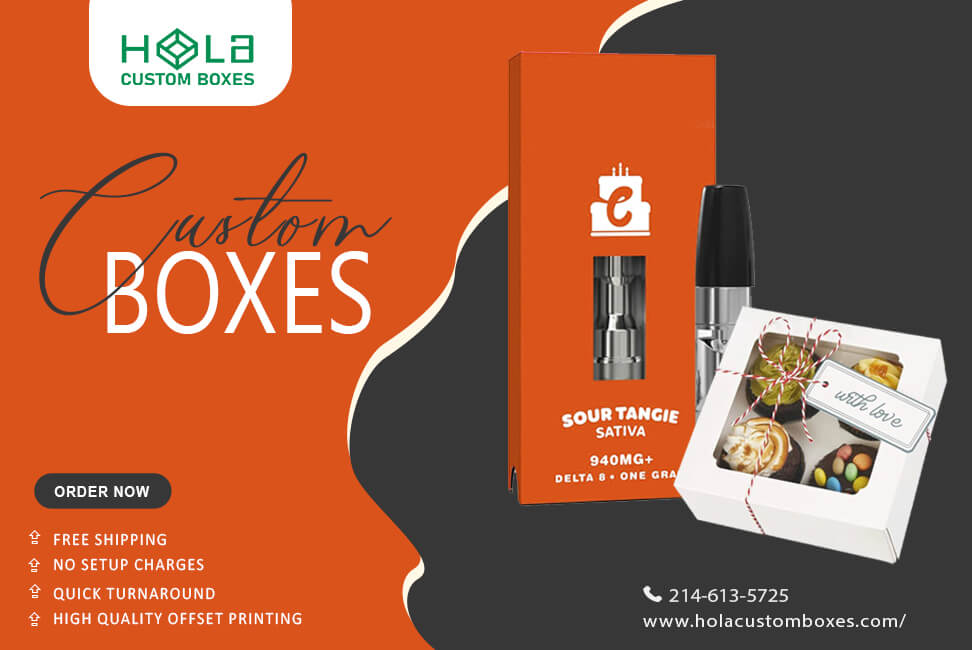Understanding The Role Of Effective Packaging In Preventing Product Damage And Ensuring Customer Satisfaction
2025-12-23 10:03:49
How Effective Packaging Prevents Product Damage and Improves Customer Satisfaction
Imagine this scenario: you eagerly order a new electronic gadget online, eagerly awaiting its arrival. When the package finally reaches your doorstep, excitement quickly turns to frustration—the product is damaged by poor packaging. Not only is your purchase ruined, but your trust in the brand is also damaged.
This is precisely why effective packaging is no longer optional. At Hola Custom Boxes, we understand that packaging is not just about enclosing a product—it’s about protecting value, preserving brand reputation, and delivering a positive customer experience from warehouse to doorstep.
In today’s fast-paced e-commerce and retail landscape, packaging must do more than survive shipping. It must prevent damage, communicate quality, and build customer confidence.
Key Takeaways
Effective packaging minimizes product damage during shipping and storage, protecting both revenue and brand reputation.
Customer feedback is essential for identifying packaging weaknesses and improving design performance.
Packaging improvements should balance feasibility, cost-effectiveness, and durability while maintaining product integrity.
Continuous evaluation and refinement of packaging leads to stronger customer satisfaction and long-term brand loyalty.
Identifying Packaging Requirements for Different Products
Every product has unique packaging needs. At Hola Custom Boxes, we design packaging that acts like a protective armor—custom-built to match the size, weight, fragility, and handling requirements of each item.
Sustainability is also a significant consideration. Eco-friendly packaging solutions not only reduce environmental impact but also strengthen brand perception among today’s conscious consumers.
Key factors to evaluate when identifying packaging requirements include:
Product dimensions and weight
Fragility and sensitivity to impact
Storage and stacking conditions
Shipping distance and handling frequency
For delicate items such as electronics or glassware, cushioning solutions like custom inserts, foam padding, or air pillows absorb shocks during transit. Reinforced corners and thicker board stock add further protection. For bulkier or irregularly shaped products, corrugated cardboard or molded pulp packaging provides strength, flexibility, and sustainability—all without excessive material waste.
Choosing the Right Materials for Packaging

Material selection plays a critical role in both product safety and customer satisfaction. Using the wrong material can lead to crushed boxes, broken products, and costly returns.
Hola Custom Boxes helps brands choose packaging materials that strike the right balance between:
Durability
Sustainability
Cost-efficiency
Sustainable options such as recyclable cardboard, biodegradable paperboard, and plant-based materials are increasingly preferred by consumers. These materials protect products effectively while reducing environmental impact.
At the same time, businesses must remain cost-conscious. Brilliant material selection ensures you’re not overspending while still maintaining packaging integrity. The right materials reduce breakage, returns, and replacement costs—saving money in the long term.
Proper Packaging Techniques for Maximum Protection
Materials alone aren’t enough—how packaging is engineered matters just as much.
Effective protective packaging includes:
Proper internal spacing to prevent movement
Secure closures that resist opening during transit
Layered protection for high-risk impact zones
When packaging is engineered correctly, products remain stable from warehouse shelves to customer doorsteps. This reduces transit damage and ensures customers receive their orders in perfect condition.
Incorporating Design and Branding Elements into Packaging

Protective packaging doesn’t have to look boring.
At Hola Custom Boxes, we combine structural protection with strong branding to create packaging that protects products while reinforcing brand identity.
Design elements that elevate packaging include:
Brand-aligned colors, fonts, and graphics
Clean, professional layouts that communicate quality
Premium finishes that enhance tactile experience
High-quality packaging materials, soft-touch laminations, embossed textures, and well-placed branding elements turn packaging into part of the product experience. Clear labeling and thoughtful messaging help customers instantly understand what they’ve received while reinforcing brand trust.
Packaging that looks intentional builds confidence—especially for first-time buyers.
Implementing Quality Control Measures for Packaging
Consistency is critical. Even the best packaging design fails if quality control is weak.
Hola Custom Boxes emphasizes strict quality control to ensure packaging performs exactly as intended. This includes:
Structural testing for compression and impact resistance
Visual inspections to detect defects or weak points
Packaging audits to ensure material consistency and seal strength
Automated inspection systems and manual audits work together to catch issues early—before packaging ever reaches customers. This proactive approach minimizes damage claims, returns, and customer dissatisfaction.
Evaluating Customer Feedback and Making Improvements
Customer feedback is one of the most valuable tools for improving packaging performance.
By analyzing reviews, surveys, and direct customer communication, brands can uncover issues such as:
Products arriving damaged
Boxes being difficult to open
Excessive or insufficient packaging material
At Hola Custom Boxes, we encourage continuous improvement by categorizing feedback, identifying patterns, and refining packaging designs accordingly. Changes are evaluated for practicality, cost-effectiveness, and sustainability before implementation.
Testing revised packaging solutions ensures that improvements actually solve the problem—without introducing new risks.
This ongoing feedback loop allows packaging to evolve alongside customer expectations, creating a better experience at every stage of the buyer journey.
Final Thoughts
Effective packaging is one of the strongest defenses against product damage—and one of the most powerful tools for building customer trust.
By combining smart material selection, engineered protection, thoughtful branding, quality control, and customer feedback, brands can deliver packaging that protects products and delights customers.
At Hola Custom Boxes, we specialize in creating packaging solutions that don’t just ship products—they protect reputations, reduce losses, and strengthen customer loyalty.
